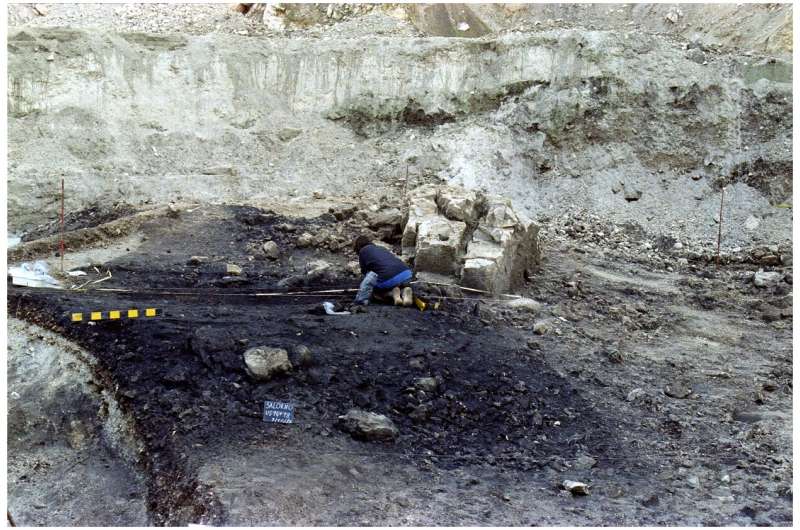May 31, 2022 report
Unique cremation site of the Late Bronze Age was left to the elements

A team of researchers affiliated with several institutions in Italy and one in the U.S. has found that a unique Bronze Age cremation site in modern Italy holds the remains of up to 172 people who were left to the elements. In their paper published on the open-access site PLOS ONE, the group describes their study of the bones and teeth they found at the cremation site and what they learned from them.
The cremation site was first discovered back in the 1980s but it was only recently that a thorough study of the remains in it was conducted. The site, called Salorno—Dos de la Forca, has been dated back to between 1150 BCE and 950 BCE, placing it in the Late Bronze Age. Items found at the site include bones (human and animal), teeth, shards of pottery and bronze figures. An oddly shaped boulder also sits on the site.
Prior work showed that the site was used for cremating humans and animals. The more recent work by the team has shown that at least 172 people were cremated at the site, though they note, there could have been more—some of those cremated may have had their remains collected and buried elsewhere. The newer work has also shown that the crematory was used for a long time, as long perhaps as two centuries. They also note that study of the bones and teeth at the site shows that the bodies that once housed them were burned, likely at temperatures as high as 700°C.
The researchers note that the most interesting thing about the site is that no effort was made by those people who were burning the bodies to retrieve the remains of those who were burned. They were simply left open to the elements for thousands of years.
Because most of the evidence of the events surrounding the cremations has been burned away, it is impossible to determine the nature of the people that were burned. The researchers suggest they could have all been related and burned as part of a ritual of some sort. They note that for the bones to have remained unbothered they would have likely have had to have been protected by those who lived in the area.
More information: Federica Crivellaro et al, Salorno—Dos de la Forca (Adige Valley, Northern Italy): A unique cremation site of the Late Bronze Age, PLOS ONE (2022). DOI: 10.1371/journal.pone.0267532
Journal information: PLoS ONE
© 2022 Science X Network




















